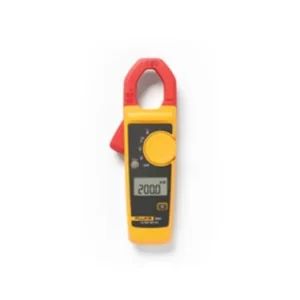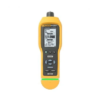Fluke 820-2 LED Stroboscope
The Fluke 820 Stroboscope is a simple, easy to use tool to stop motion for measurement and diagnostic purposes allowing you to:
• Identify the running speed of rotating equipment without stopping the operation or making contact with machinery
• Stop motion for diagnoses of parasitic oscillations, flaws, slippage or unwanted distortions
• Measure speed of rotation or frequency of a rotating shaft, speaker, or mechanical part
• Identify part numbers or other markings
Adjustable flash duration
For most applications the standard flash duration will work well without adjustment. In other applications with higher rpm or larger
rotating objects with high surface speeds, an adjustable flash duration is needed. In high speed applications, objects may move during the brief period of a single flash, resulting in a blurred image. By decreasing flash duration, objects have less time to move
and the image will appear sharper.
Common Applications for the 820
The Fluke 820 Stroboscope is more than just a tool to measure rotational speed of machinery without physical contact. It is also an excellent diagnostic tool for a wide variety of applications:
• Belt driven machines—HVAC fans, pumps
• Roller bearings, shafts, gear teeth or other machine components
• Clutches and cogwheels
• Foundations—resonance vibrations
• Cable or piping wear or damage
• Mixing and dosage processes
In addition, the stroboscope can be used as a strobe tachometer to measure speed instead of using a laser tachometer. In order to use the stroboscope, the component under measure must be visible, and have an identifying mark that can be used as a point of reference. A strobe tachometer is a useful tool because you can’t always get access to the machine shaft to stick a piece of reflective tape to use a laser tachometer or make contact with the moving shaft to use a contact tachometer—using a stroboscope you can “stop” the shaft down to 300 RPM (FPM).
Use the 820 for:
• Turbines that vary in speed and change speed frequently
• Variable Frequency Drive motors that vary in speed, but do not change frequently
• Find belt rotation speed and look for belt slippage
• Find machine element components – fan blades, pump vanes, compressor screws, and gear teeth.
• RPM measurement and frequency investigation
• Slip measurement


 fluke-820-2-stroboscope-datasheet
fluke-820-2-stroboscope-datasheet









